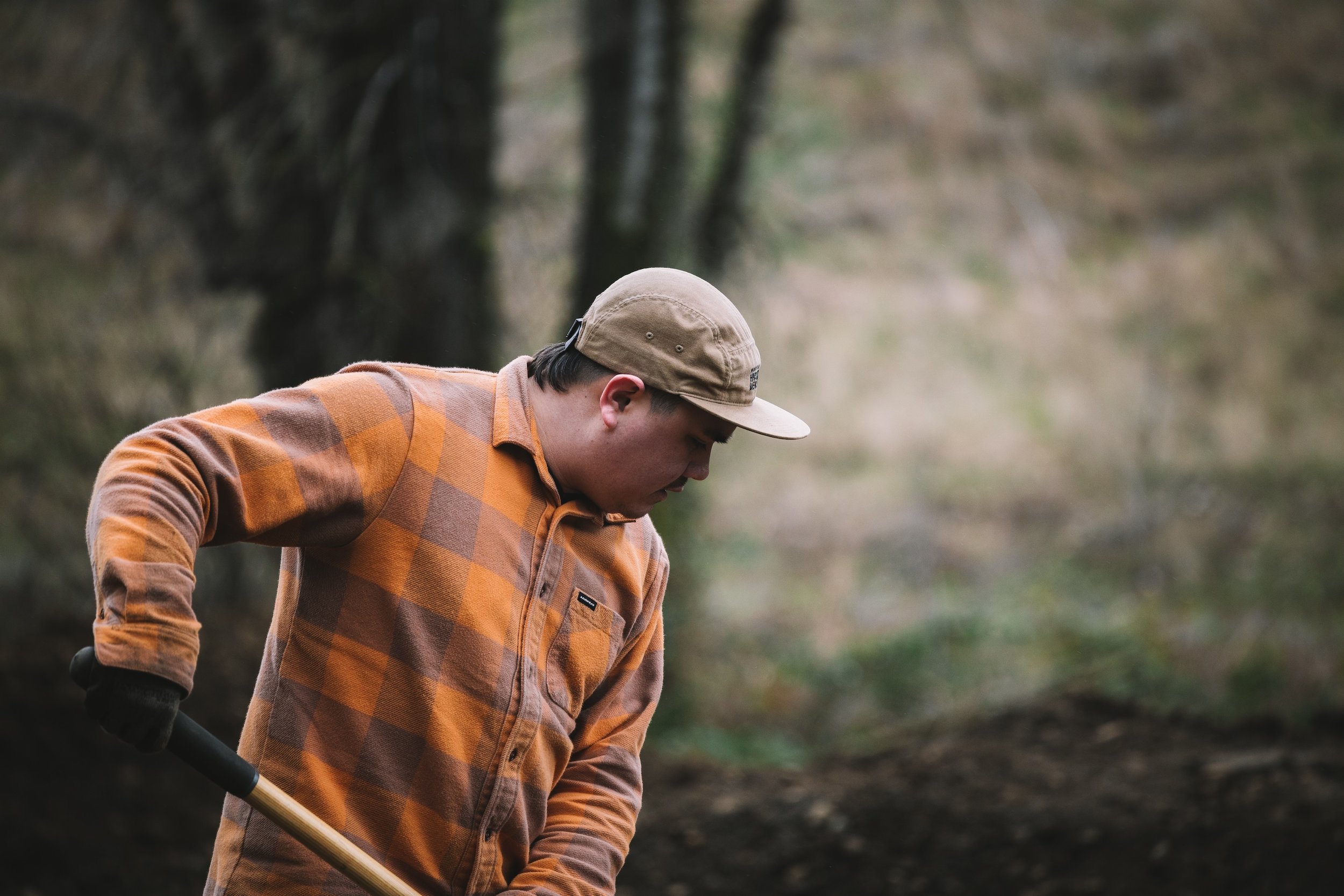
How to Measure the Economic and Social Impact of Trail Building
Learn how trail builders and advocacy groups can measure and report the economic and social impact of their trail work. From tracking visitor spending to gathering volunteer data, this article offers practical steps to prove the value of trails to funders, policymakers, and community leaders.
Trail Tested: Why the Avision Guardian Knee Pad Works On and Off the Bike
Some gear fades into the background in the best way possible. You don’t have to think about it, adjust it, or wrestle with it mid-ride or mid-dig. That was my experience with the Guardian knee pads from Avision MTB. They’re the kind of pads you forget you’re wearing until they save your knees or your day.
I’ve worn a lot of knee pads over the years, most built for either hardcore descents or casual trail riding. Some fit like armor. Others feel like a glorified sleeve. The Guardian sits somewhere different: sturdy enough to protect when you need it, but easy and intuitive in a way that just works, especially when you’re bouncing between riding and trail building.
Beyond the Hashtag: How Brands Can Meaningfully Support Trail Builders
Too many brands talk about trails. Fewer show up for the people who build them.
Trail builders don’t need another hashtag. They need partners.
In our latest piece, we explore what real support looks like, from long-term funding to inclusive storytelling, and why performative sponsorship just isn’t enough anymore.
Anti-Tech Tech Tee by ANIMA MERX: Built for Trail Builders, Riders, and Pocket Tee Fans
There’s something about a good pocket tee that just does it for me. Maybe it’s the subtle nod to utility. Maybe it’s the aesthetic. But if you’re anything like me, someone who splits time between photography, bikes, and post-ride burritos, a shirt like the Anti-Tech Tech Tee just works.
Building Strong Relationships With Land Managers for Trail Projects
It’s easy to think trail work is all about dirt, tools, and sweat equity. But here’s the truth: your next trail project may hinge less on how many volunteers show up and more on how strong your relationships are with local, state/provincial, or federal land managers.
Whether you’re trying to legalize an existing network or propose a brand-new system, trust is the currency that opens doors. And in an era of limited staff and increasing scrutiny, agencies need partners they can count on. Not just once, but again and again.
So how do you build that kind of relationship?
Let’s dig in.
How to Recruit and Retain Volunteers for Trail Work Parties
It’s 8:42 a.m. and a dozen volunteers are gathered around a pile of tools, half-listening to the safety talk, half-sipping coffee from a local sponsor. It’s a familiar scene for grassroots trail organizations. Small but mighty groups fueled not by big budgets, but by willing hands and repeat enthusiasm.
But here’s the reality: without consistent volunteer support, even the most passionate trail orgs will struggle to maintain momentum. Recruiting volunteers is hard. Retaining them is harder. And when that one ultra-reliable digger stops showing up, it can feel like starting over.
So, how do you build something sustainable? How do you grow your crew list, avoid burnout, and keep volunteers coming back, season after season?
Let’s dig in.
Tell the Story, Build the Support: How Small Trail Organizations Can Use Social Media to Rally a Community
In Pioche, Nevada, a new trail system is transforming more than just the landscape—it’s helping reshape the town’s identity. And they didn’t do it with big sponsors or flashy marketing. They told their story.
In our latest article, we explore how small and underfunded trail nonprofits, for-profit builders, and rural communities can use social media to build momentum, invite others in, and grow support—without needing a big budget.
Why Trail Builders Need Their Own Platform ... And Why It’s Working
Mountain biking celebrates the elite. Trail building celebrates everyone else. You show up early. Haul tools. Shape berms. Drain puddles. And most days, nobody notices. I started Trail Builder Magazine because I wanted to change that.
Unsanctioned: A Series About Rogue Trail Builders - Part 4: East Africa
In a forested region in East Africa, a small group of mountain bikers is quietly building trails. There are no press releases, no grants, no signage. Just machetes, shovels, and a deep respect for the land and the communities who live alongside it. In this installment of our Unsanctioned series, we spoke with one of the builders behind these efforts. What follows is a rare window into what it means to build trails when the rules are unclear, the forest is contested, and success isn’t measured in Strava segments but in schoolchildren crossing muddy paths and reforestation crews finding safe passage.
Price & Purpose
In “Price & Purpose,” trail builder Dillon Osleger calls for a shift in mountain biking culture—away from commodified, copy-paste flow trails and toward restoration, local engagement, and ecological stewardship. He critiques the industry’s fixation on new trails as economic drivers and urges a deeper reckoning with the environmental and cultural impacts of trail development. Trails shouldn’t just be sold—they should serve people and place.










